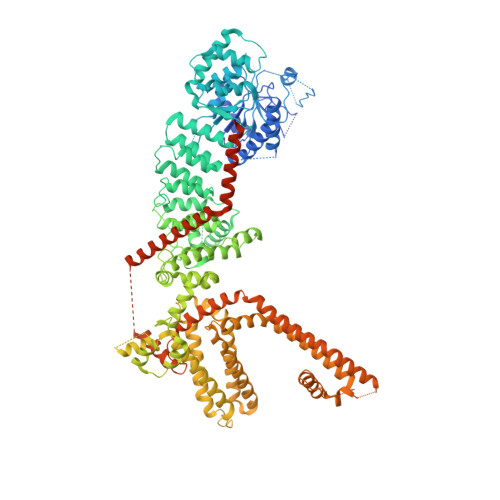Structural dynamics at cytosolic interprotomer interfaces control gating of a mammalian TRPM5 channel.
Karuppan, S., Schrag, L.G., Pastrano, C.M., Jara-Oseguera, A., Zubcevic, L.(2024) Proc Natl Acad Sci U S A 121: e2403333121-e2403333121
- PubMed: 38923985
- DOI: https://doi.org/10.1073/pnas.2403333121
- Primary Citation of Related Structures:
8SL6, 8SL8, 8SLA, 8SLE, 8SLI, 8SLP, 8SLQ, 8SLW - PubMed Abstract:
The transient receptor potential melastatin (TRPM) tetrameric cation channels are involved in a wide range of biological functions, from temperature sensing and taste transduction to regulation of cardiac function, inflammatory pain, and insulin secretion. The structurally conserved TRPM cytoplasmic domains make up >70 % of the total protein. To investigate the mechanism by which the TRPM cytoplasmic domains contribute to gating, we employed electrophysiology and cryo-EM to study TRPM5-a channel that primarily relies on activation via intracellular Ca 2+ . Here, we show that activation of mammalian TRPM5 channels is strongly altered by Ca 2+ -dependent desensitization. Structures of rat TRPM5 identify a series of conformational transitions triggered by Ca 2+ binding, whereby formation and dissolution of cytoplasmic interprotomer interfaces appear to control activation and desensitization of the channel. This study shows the importance of the cytoplasmic assembly in TRPM5 channel function and sets the stage for future investigations of other members of the TRPM family.
Organizational Affiliation:
Department of Biochemistry and Molecular Biology, The University of Kansas Medical Center, Kansas City, KS 66160.














